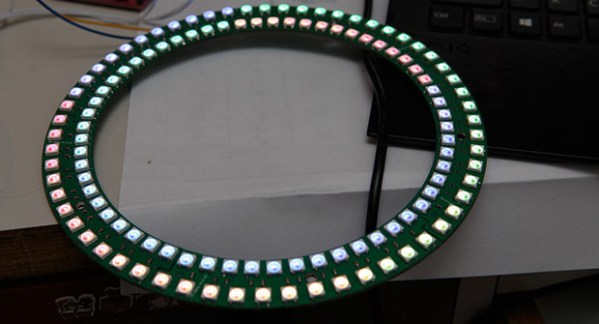Over on the Projects site, [ThunderSqueak] is pushing the bounds of what anyone would call reasonable and is building a CO2 laser from parts that can be found in any home improvement store.
Despite being able to cut wood, paper, and a bunch of other everyday materials, a carbon dioxide laser is actually surprisingly simple. All you need to do is fill a tube with CO2, put some mirrors and lenses on each end, and run an electric current through the gas. In practice, though, there’s a lot of extra bits and bobs required for a working laser.
[ThunderSqueak] will need some sort of cooling for his laser, and for that he’s constructed a watercooling jacket out of 2″ PVC. In the end caps, a pair of brass pipe fittings are JB Welded in place, allowing a place for the mirror assembly and lenses.
The mirror mounts are the key component of this build, but the construction method is surprisingly simple. [ThunderSqueak] is using a few brass barbed hose fittings, with washers stuck on one end. The washers are drilled to accept a trio of bolts that will allow the mirrors to be perfectly parallel; anything less and the CO2 won’t lase.
The build isn’t complete yet, but having already built a few lasers, there’s little doubt [ThunderSqueak] will be able to pull this one off as well.

















